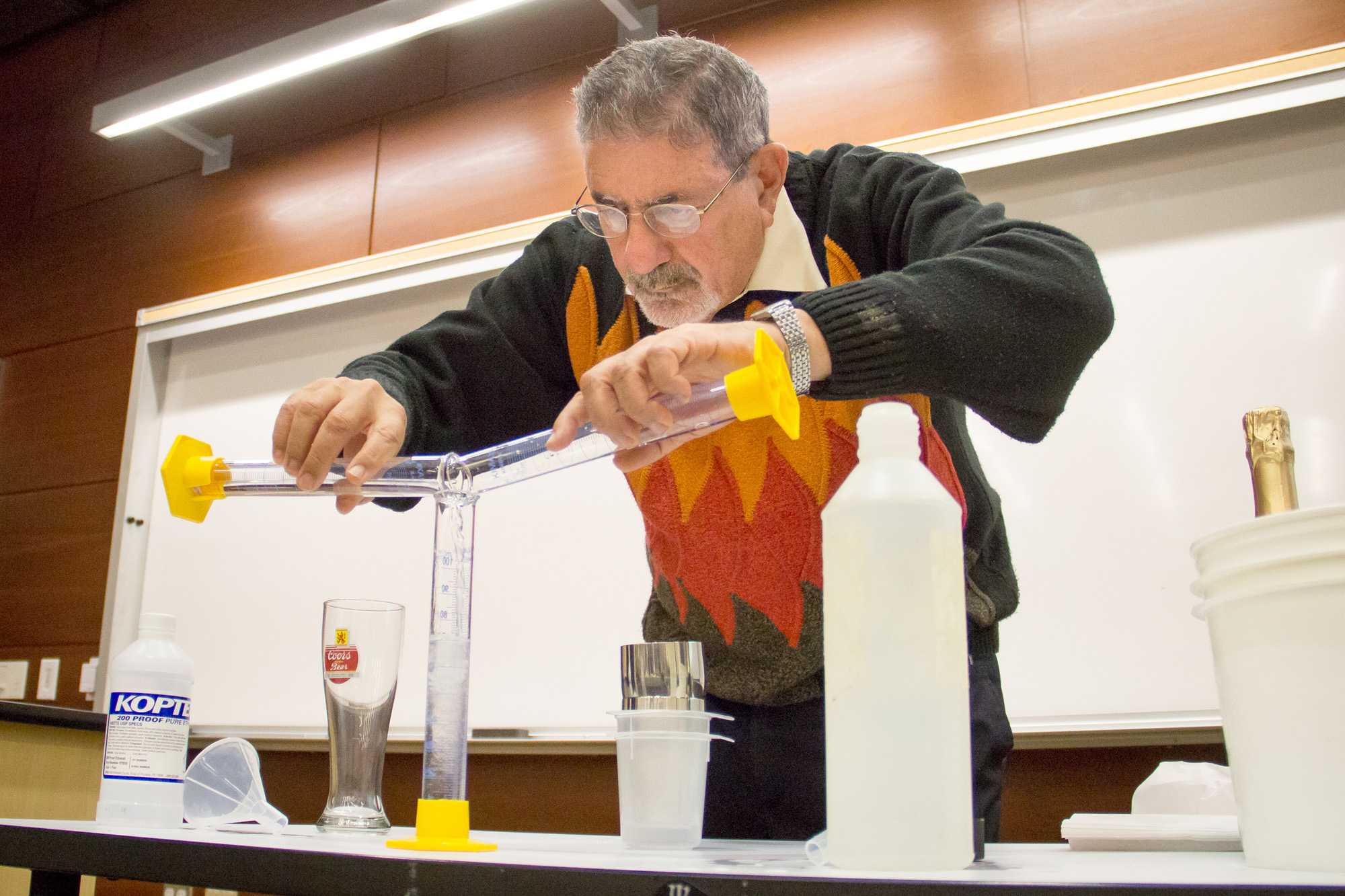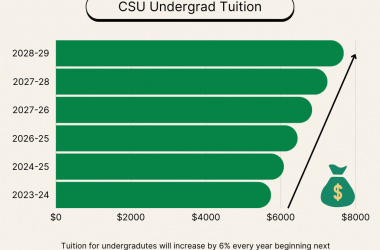Throughout the years there have been a number of James Bonds, but his drink has remained the same — Vodka martini, shaken not stirred.
Stanford University professor Richard N. Zare delivered a presentation titled, “Shaken and Not Stirred – Why James Bond Prefers his Vodka Martinis That Way,” at the Hall of Science yesterday. He said he has developed a fascination with the chemistry, bubbles and the “fizzics” behind drinks.
“Once you start to know something like this, it makes your world richer,” Zare said.
Zare became intrigued with fizzles after a friend asked him about the movements and growth of bubbles in beer and other carbonated beverages.
“This question about bubbles led on to anything to do with drinks,” Zare said.
After the question that led him to wonder about the chemistry behind Bond’s favorite cocktail, he dedicated more than a year to finding the answer and hasn’t looked at carbonated drinks the same way since.
During his presentation, Zare demonstrated why Bond’s martini is always prepared the same way, by shaking and stirring ice with ethanol, the main ingredient in alcohol.
“Stirring is an inefficient form of shaking,” Zare said. “That’s all it’s about. There is a difference — the shaking is colder.”
Zare explained that stirring martinis melts the ice faster and shaking creates tiny air bubbles in the drink and changes its taste.
“If you’re a martini kind of sir, then you can detect these differences,” Zare said.
Zare called other theories about Bond’s shaken, not stirred preference, “silly.”
“Other people have said that by melting the ice, James Bond has diluted his martini and it makes him stronger,” Zare said. “If you drink both, you get the same amount of alcohol and get the same biological effect.”
Biochemistry students Megan Vanderham and Cindy Trie said they were drawn to the presentation because of its name.
“I drink … soda often,” Trie said. “I was curious about what he had to say about carbonated drinks.”
After solving the mystery behind the notorious agent, Zare moved on to the bubble flow in sparkling drinks like beer by popping open a bottle of champagne to observe the bubbles and the streamer-like pattern they create.
Although the champagne bubbles flowed upward, Zare explained that with beer, bubbles purify the drink.
“The bubbles in beer remove the hops,” Zare said. “The foam in beer is more bitter than the beer.”
Zare’s research into bubbles has made him an expert in the field.
“Now everybody in the world writes to me about bubbles,” Zare said.
For Vanderham, the presentation was a unique experience.
“I think I need to look at my drinks every time I drink it,” Zare said. ”It’s like an eye-opening experience and it makes you think a little more about your surroundings.”





Pingback: bubbly professor explains the “fizzics” of bubbles | Enedina Cisneros